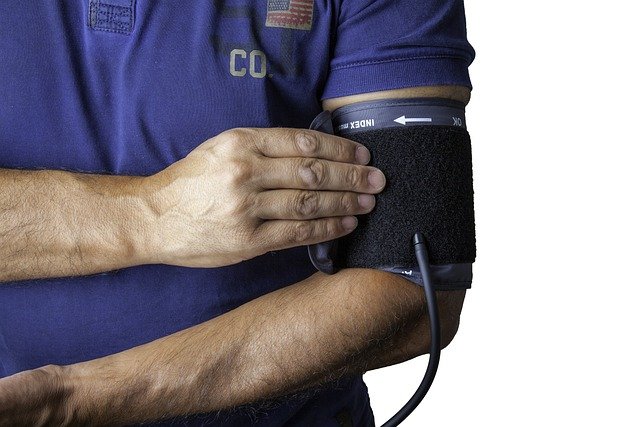Understanding Portable Blood Pressure Monitors - A Comprehensive Guide
Portable blood pressure monitors have become increasingly popular for managing hypertension and maintaining cardiovascular health. These compact devices allow individuals to measure their blood pressure conveniently at home or on the go, providing valuable data for both patients and healthcare providers. This guide explores the various aspects of portable blood pressure monitors, from their functionality to their practical applications in daily life.

What Are Portable Blood Pressure Monitors?
Portable blood pressure monitors are compact, electronic devices designed to measure an individual’s blood pressure outside of clinical settings. These devices typically consist of an inflatable cuff that wraps around the upper arm or wrist, connected to a digital display unit. The monitor uses oscillometric technology to detect blood flow and calculate systolic and diastolic pressure readings, as well as heart rate. Unlike traditional manual sphygmomanometers used in medical offices, portable monitors are user-friendly and require minimal training to operate effectively.
What Are the Key Features of Portable Blood Pressure Monitors?
Modern portable blood pressure monitors come equipped with a range of features to enhance accuracy and user experience:
-
Memory function: Many devices can store multiple readings, allowing users to track their blood pressure over time.
-
Multiple user profiles: Some monitors support profiles for different users, making them suitable for family use.
-
Irregular heartbeat detection: Advanced models can identify and alert users to potential arrhythmias.
-
Bluetooth connectivity: Certain devices can sync data with smartphones or tablets for easy tracking and sharing with healthcare providers.
-
Cuff size options: To ensure accurate readings, many monitors offer different cuff sizes to accommodate various arm circumferences.
-
Averaging function: Some monitors can calculate average readings over a specified period, providing a more comprehensive view of blood pressure trends.
How Are Portable Blood Pressure Monitors Used?
Portable blood pressure monitors are primarily used for self-monitoring of blood pressure at home. Here’s a general guide on how to use these devices:
-
Prepare: Sit comfortably with your back supported and feet flat on the floor. Rest for 5 minutes before taking a reading.
-
Position the cuff: Place the cuff on your bare upper arm, about an inch above the elbow crease.
-
Align the cuff: Ensure the cuff is at heart level and snug, but not too tight.
-
Start the measurement: Press the start button and remain still and quiet during the reading.
-
Record the results: Note down the systolic and diastolic pressure values, along with the date and time.
-
Repeat: For accuracy, take two to three readings, waiting a minute between each.
-
Track over time: Maintain a log of your readings to share with your healthcare provider.
What Models of Portable Blood Pressure Monitors Are Available?
Portable blood pressure monitors come in various models to suit different needs and preferences:
-
Upper arm monitors: These are considered the most accurate for home use and are recommended by most healthcare professionals.
-
Wrist monitors: More compact and convenient, but may be less accurate if not positioned correctly at heart level.
-
Finger monitors: The least common and generally less accurate, but can be useful for quick checks in certain situations.
-
Smartphone-compatible monitors: These integrate with mobile apps for advanced tracking and analysis.
-
Travel-sized monitors: Ultra-compact models designed for portability and ease of use while traveling.
What Are the Prices of Portable Blood Pressure Monitors?
Portable blood pressure monitors vary in price depending on their features, brand, and accuracy. Here’s a comparison of some popular models and their estimated prices:
| Model | Type | Key Features | Estimated Price Range |
|---|---|---|---|
| Omron Platinum | Upper Arm | Multi-user, Bluetooth, TruRead | $70 - $100 |
| Withings BPM Connect | Upper Arm | Wi-Fi sync, compact design | $90 - $130 |
| A&D Medical UA-651BLE | Upper Arm | Bluetooth, multi-user | $50 - $80 |
| iHealth Track | Wrist | Irregular heartbeat detection | $30 - $50 |
| Qardio Arm | Upper Arm | Smartphone app, sleek design | $80 - $120 |
Prices, rates, or cost estimates mentioned in this article are based on the latest available information but may change over time. Independent research is advised before making financial decisions.
What Are the Benefits of Using Portable Blood Pressure Monitors?
Portable blood pressure monitors offer several advantages for individuals managing hypertension or monitoring their cardiovascular health:
-
Convenience: Users can take readings at any time, without visiting a healthcare facility.
-
Frequent monitoring: Regular measurements provide a more comprehensive picture of blood pressure fluctuations.
-
White coat syndrome mitigation: Home readings can help identify if blood pressure is artificially elevated in clinical settings.
-
Medication effectiveness: Monitors allow patients and doctors to assess how well prescribed treatments are working.
-
Early detection: Regular monitoring can help identify potential health issues before they become severe.
-
Empowerment: Users become more engaged in their health management, potentially leading to better lifestyle choices.
Portable blood pressure monitors have revolutionized how individuals track and manage their cardiovascular health. By providing easy access to accurate blood pressure readings, these devices empower users to take a proactive approach to their well-being. When choosing a monitor, consider factors such as accuracy, ease of use, and compatibility with your lifestyle. Always consult with a healthcare professional to interpret your readings and make informed decisions about your health management strategy.
This article is for informational purposes only and should not be considered medical advice. Please consult a qualified healthcare professional for personalized guidance and treatment.




